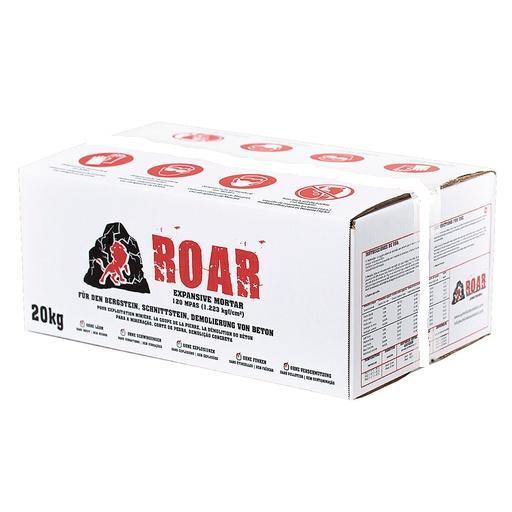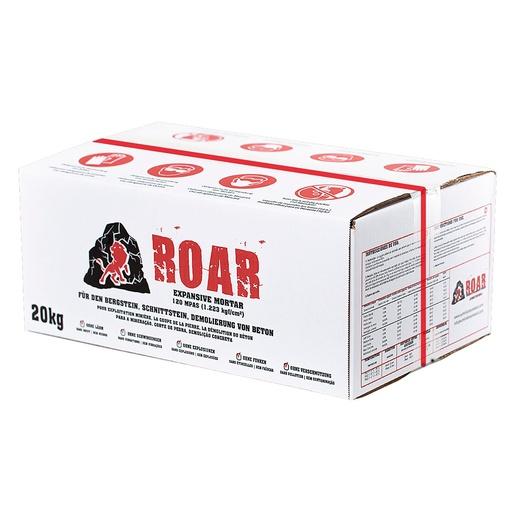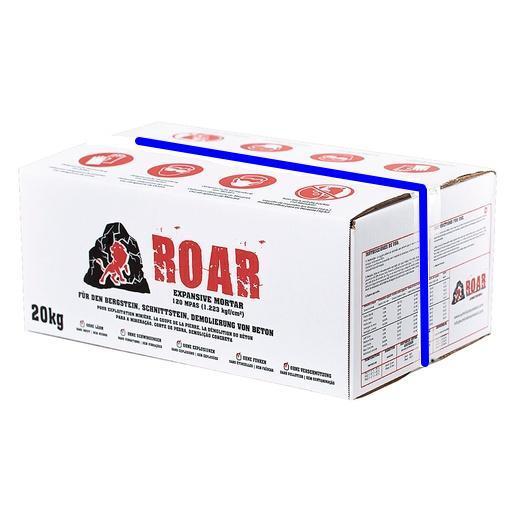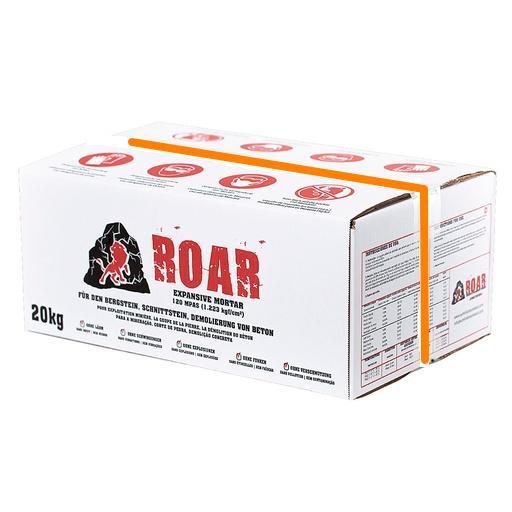Which Roar demolition agent to choose?
Innovative Technologies in Silent Demolition: Exploring the World of ROAR Agents
ROAR (Silent Demolition Agent) is used in the construction and demolition industry to fracture rock, concrete and other materials without generating vibrations, projectiles, dust or harmful gases.
ROAR Agent Choice:

ROAR TYPE 2 (Spring)
Recommended in most cases.
• Minimum temperature: 5 degrees Celsius
• Maximum temperature: 25 degrees Celsius (first 4 hours)
• Minimum diameter: 45 mm
• Maximum diameter: 65 mm

ROAR TYPE 3 (Summer)
Recommended for high temperatures.
• Minimum temperature: 20 degrees Celsius
• Maximum temperature: 40 degrees Celsius (first 4 hours)
• Minimum diameter: 45 mm
• Maximum diameter: 45mm
Buy

ROAR TYPE 1 (Winter):
Recommended for low temperatures.
• Minimum temperature: -5 degrees Celsius
• Maximum temperature: 15 degrees Celsius (first 4 hours)
• Minimum diameter: 26 mm
• Maximum diameter: 65 mm

ROAR TYPE 4
Recommended for large diameters.
• Minimum temperature: 5 degrees Celsius
• Temperatura máxima: 35 grados centígrados (4 primeras horas)
• Diámetro mínimo: 50 mm (recomanado para T. 35 grados centigrados)
• Diámetro máximo: 89 mm (recomanado para T. 15 grados centigrados)
Buy
Setting Phases:
3 phases can be differentiated in the chemical process.
Phase 0: Mixing (0 to 15 minutes)
• It should be mixed thoroughly with clean, cold water before use, in a proportion of 26%-30% of the total weight. Place the necessary amount of water (1.2 – 1.5 liters for each 5 kg bag of cement) in a long container and gradually add the powder to the water, stirring constantly to obtain a smooth mixture without lumps.
• The temperature of the mixture must be controlled with a thermometer, the temperature of the environment and the temperature of the hole where the product is going to be poured.
Phase 1: Rapid Reaction (15 minutes to 4 hours)
• In this rapid phase, the cement and water undergo an exothermic reaction, generating heat. It is crucial to have controlled the temperature in the mixing phase to avoid the siphon effect. Strategies to control temperature:
1. Cool the mixture with cold or ice water (ice can be used in the mixture if necessary).
2. Reduce the drilling diameter to reduce rapid temperature rise.
3. Aditivar con retardantes de la reacción.
4. Use cement with a lower maximum temperature, such as summer type 1.
Phase 2: Slow Reaction (4 hours up to 10 days)
• In this slow phase, there is no longer any danger of siphon effect, but the minimum temperature must be controlled. This temperature is what will be decisive for the speed of rock breakage; the higher the temperature, the faster the reaction will be. Strategies to control the minimum temperature:
1. Cover the work area with plastic or thermal materials.
2. Temper the water by increasing its temperature (up to the maximum temperature of the cement) or add lime (CaO) or calcium chloride in a proportion of 4% (200 grams/5 kg of expansive cement).
3. Use Demolition Agent Type 3 (Winter).
• In this phase it is important that water does not enter the already loaded holes as it can stop the reaction.
Tabla de temperaturas máximas aproximadas en °C según el diámetro de perforación que puede soportar la mezcla según y el tipo de cemento expansivo ROAR.
Si la perforación supera las temperaturas máximas recomendadas, utilizar retardantes industriales compatibles para obtener mejores resultados
| Tipo ROAR | 1″ | 1 ¼″ | 1 ½″ | 1 ¾″ | 2″ | 2 ½″ | 2 ¾″ | 3″ | 3 ¼″ | 3 ½″ | 4″ |
| 25.4 mm | 31.8 mm | 38.1 mm | 44.5 mm | 51 mm | 64 mm | 69.9 mm | 76.2 mm | 82.6 mm | 89 mm | 102 mm | |
| Tipo 1 (Verano) | 40 | 40 | 35 |
25 | 15 | — | — | — | — | — | — |
| Tipo 2 (Primavera) | 30 | 25 | 25 | 15 | — | — | — | — | — | — | — |
| Tipo 3 (Invierno) | 15 | 15 | 15 | 5 | — | — | — | — | — | — | — |
| Tipo 4 (Grandes diámetros) | — | — | — | — | 43 | 37 |
35 | 30 | 25 | 25 | 15 |
